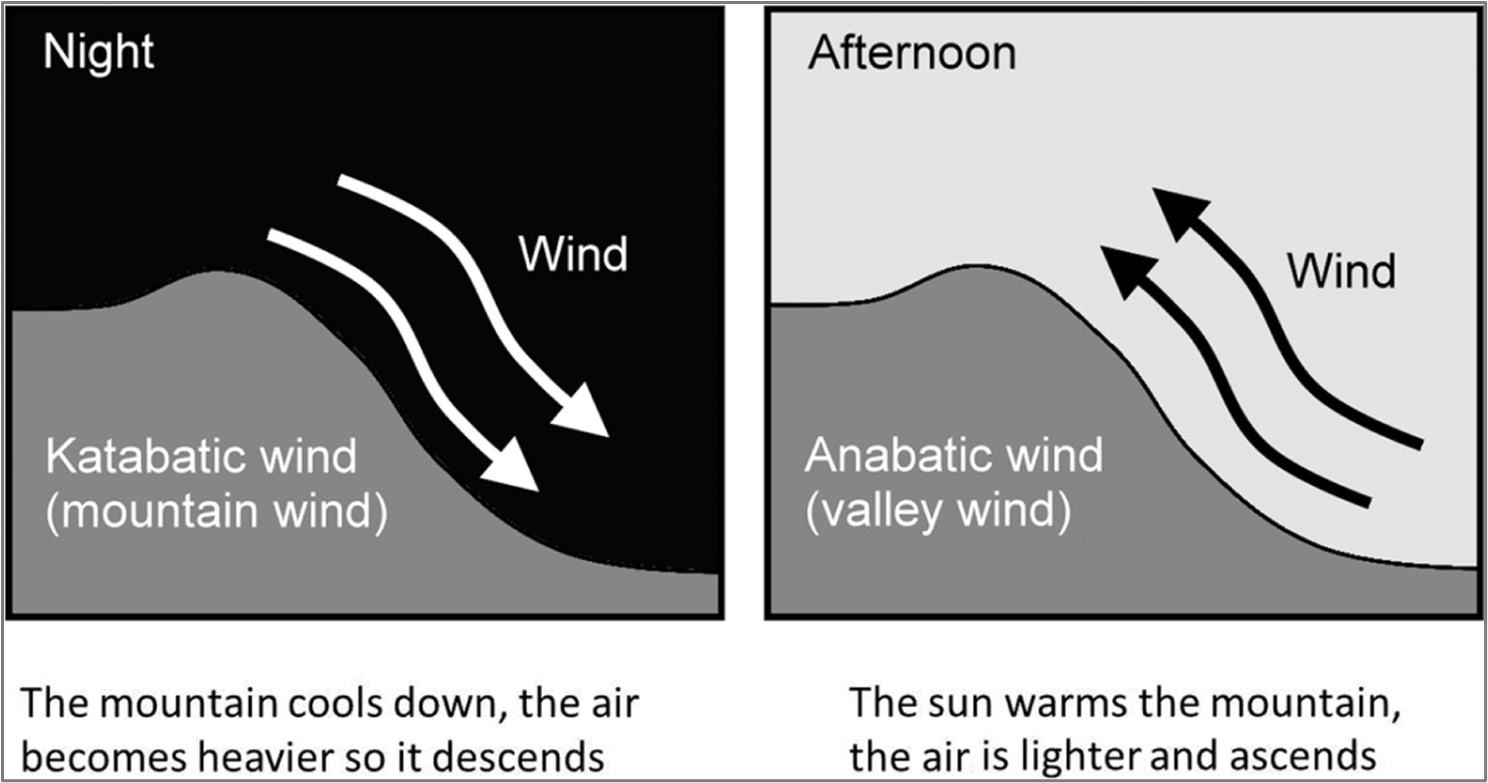PREVIOUS
Himalayan Katabatic Winds
December 19 , 2023
731 days
1038
0
- Scientists have noted that when high temperatures hit high-altitude ice masses, ‘katabatic’ winds are triggered that blow cold air to lower-altitude areas.
- A temperature gap is created between the air flowing above the mountains and the cooler air directly in contact with ice masses.
- This leads to an increase in turbulent heat exchange at the glacier’s surface and stronger cooling of the surface air mass.
- As the warm air gets cooler and denser, it sinks, triggering the katabatic winds in neighbouring areas down the slope.
- While this phenomenon may slow down the effects of global warming in some areas, its sustainability is not guaranteed over the coming decades.

Leave a Reply
Your Comment is awaiting moderation.


